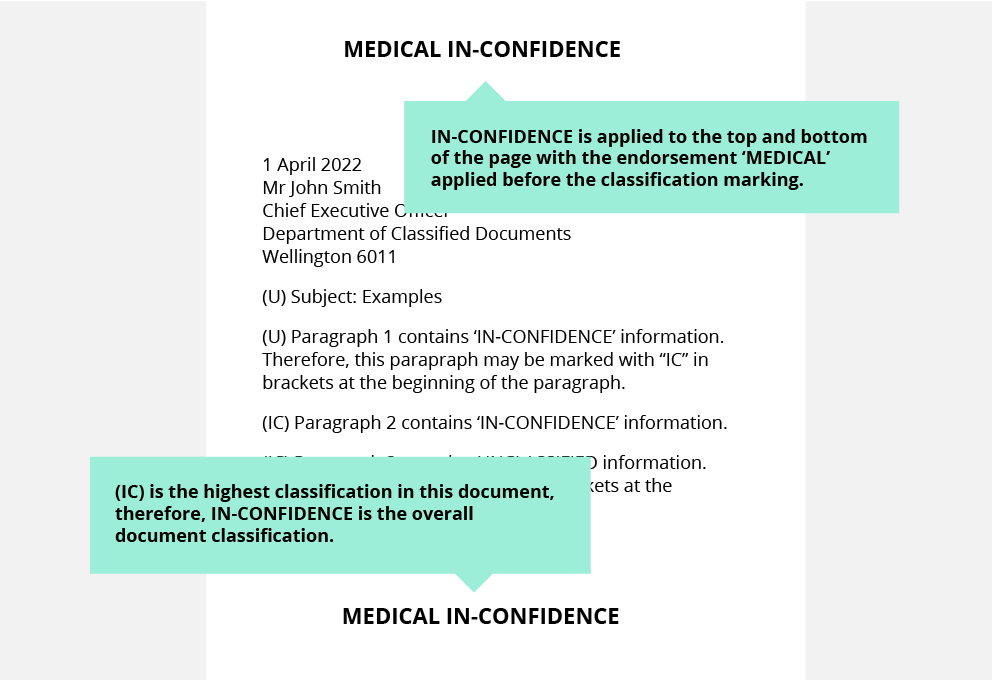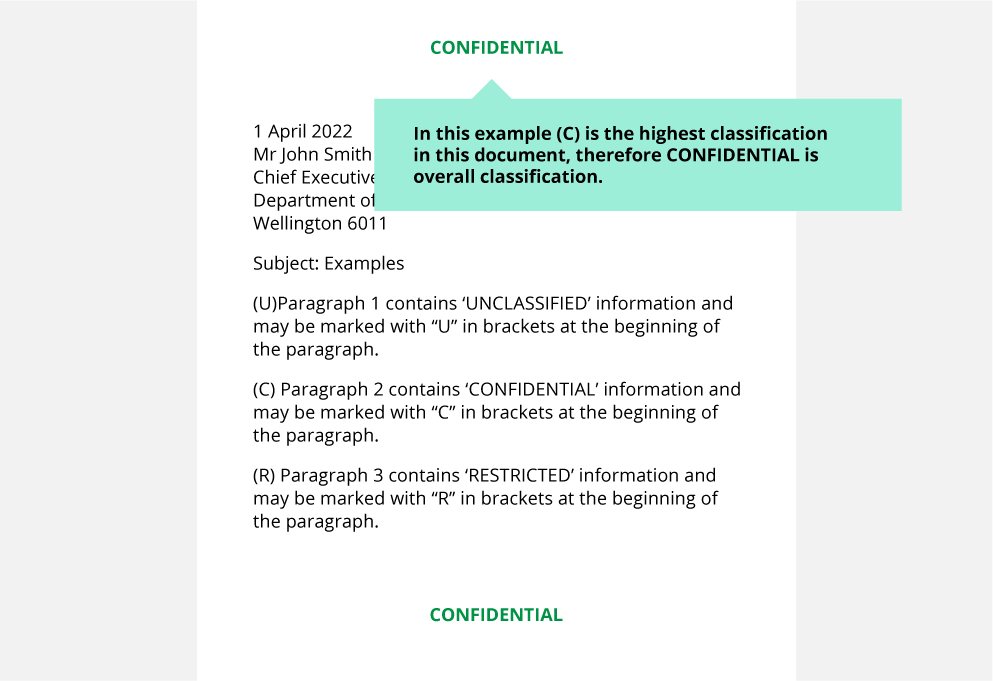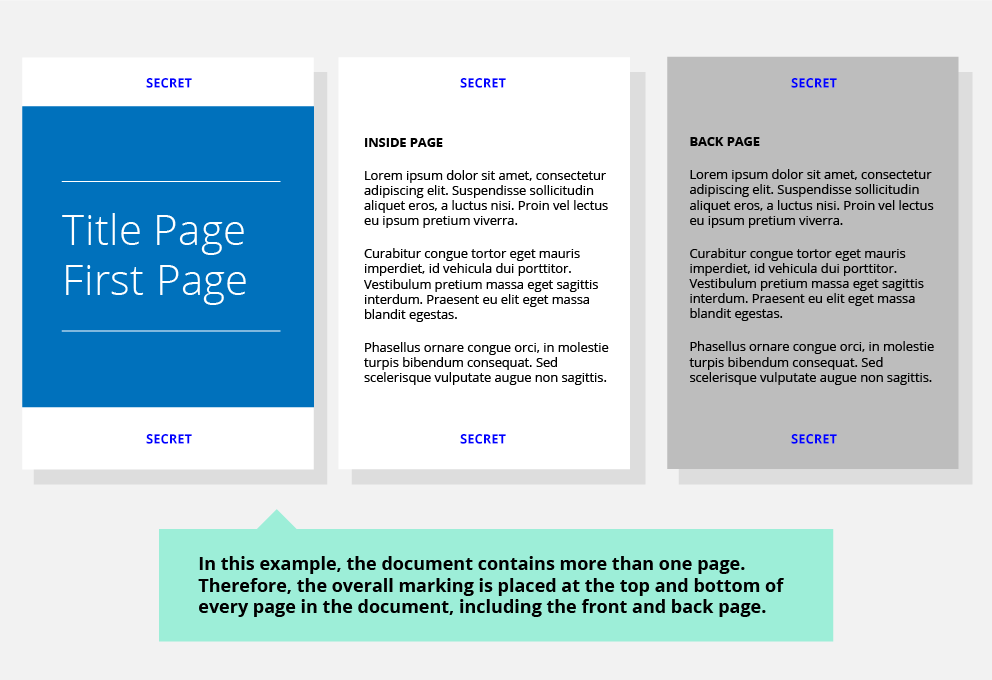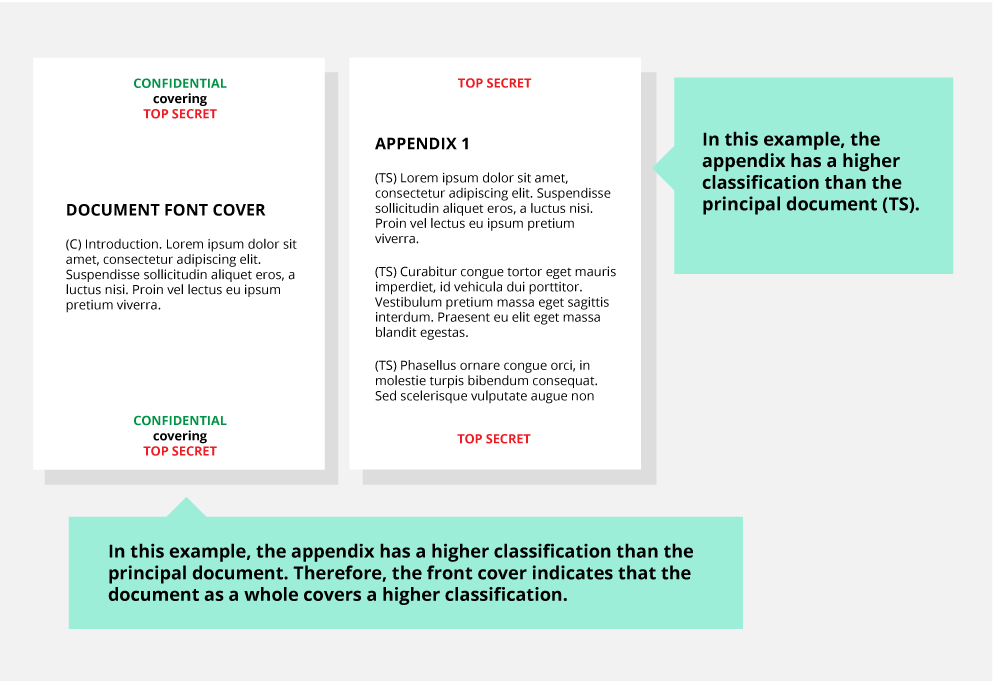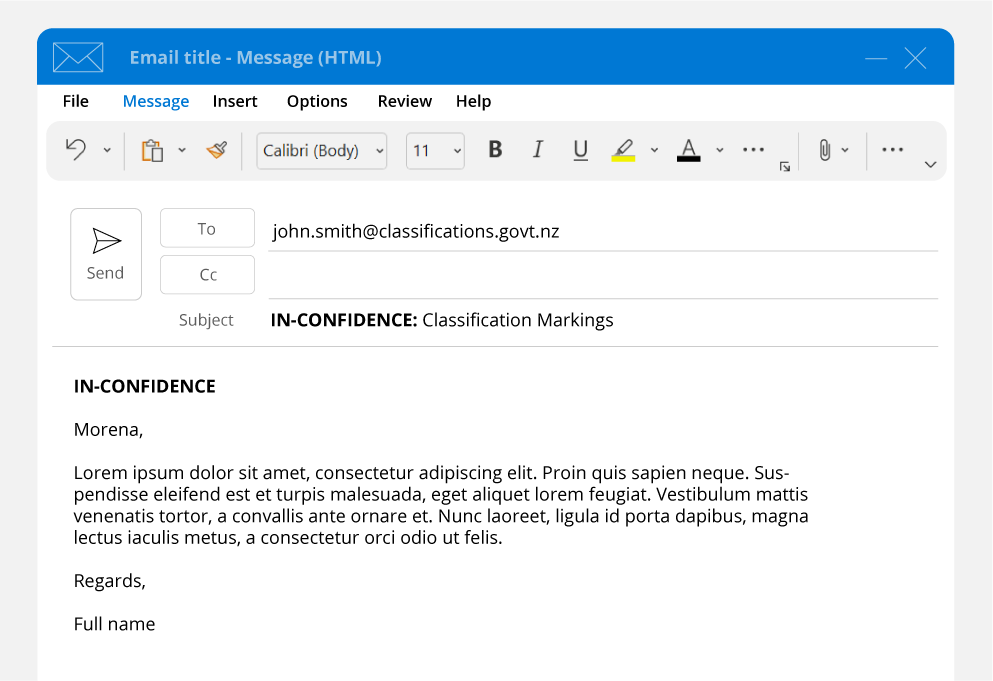Marking paragraphs
Sometimes paragraphs may need to be marked because they have different or higher security needs. For example, a paragraph in a document might contain secret information. Paragraph markings are called ‘paragraph grading indicators’.
Your agency should consider including in your classification policy and procedures, information on protectively-marking paragraphs.
Applying paragraph grading indicators
Put paragraph grading indicators in brackets at the beginning of each paragraph. Write them in full or abbreviate them using the first letters of the security classification. For example, (S) for SECRET or (IC) for IN-CONFIDENCE. Table 8 shows the standard abbreviations you can use.
Paragraph grading indicators should be the same colour as the text in the document.
If you use paragraph grading indicators, you must also mark all the paragraphs in the document, so that no one is confused about which markings apply to what text.
Use UNCLASSIFIED for paragraphs that don’t carry a protective marking. Example 5 shows you how to do that.
| CLASSIFICATION |
CODE |
| UNCLASSIFIED |
(U) |
| IN-CONFIDENCE |
(IC) |
| SENSITIVE |
(Sen) |
| RESTRICTED |
(R) |
| CONFIDENTIAL |
(C) |
| SECRET |
(S) |
| TOP SECRET |
(TS) |
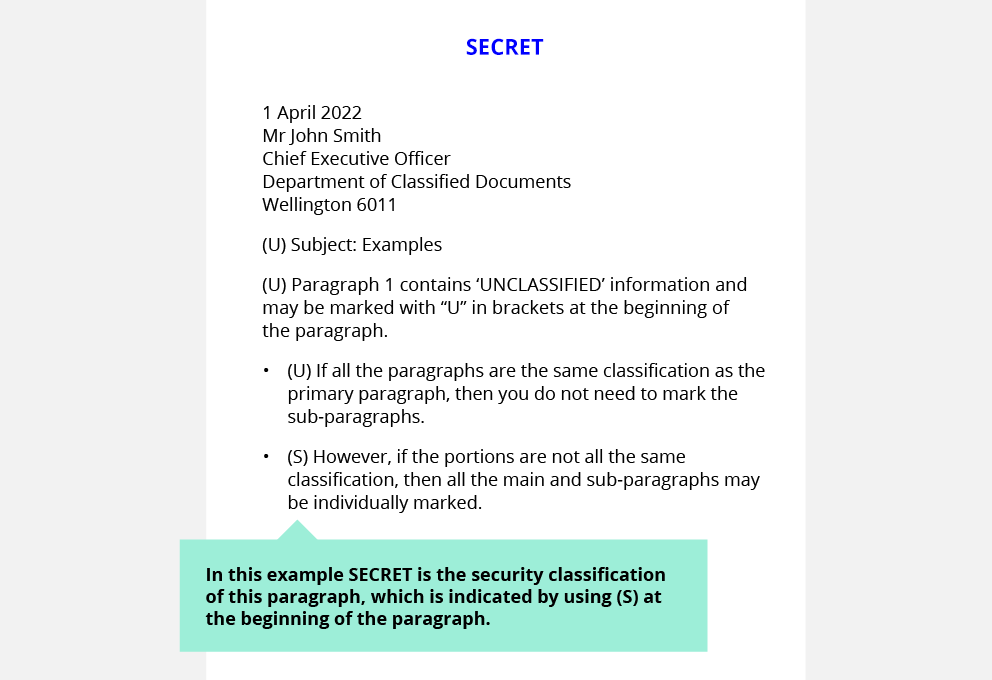
Applying paragraph grading indicators
Once you’ve applied paragraph grading indicators, you need to establish the overall protective marking for the document. The overall marking must be at least equal to the highest classification level of any one paragraph within the document.
